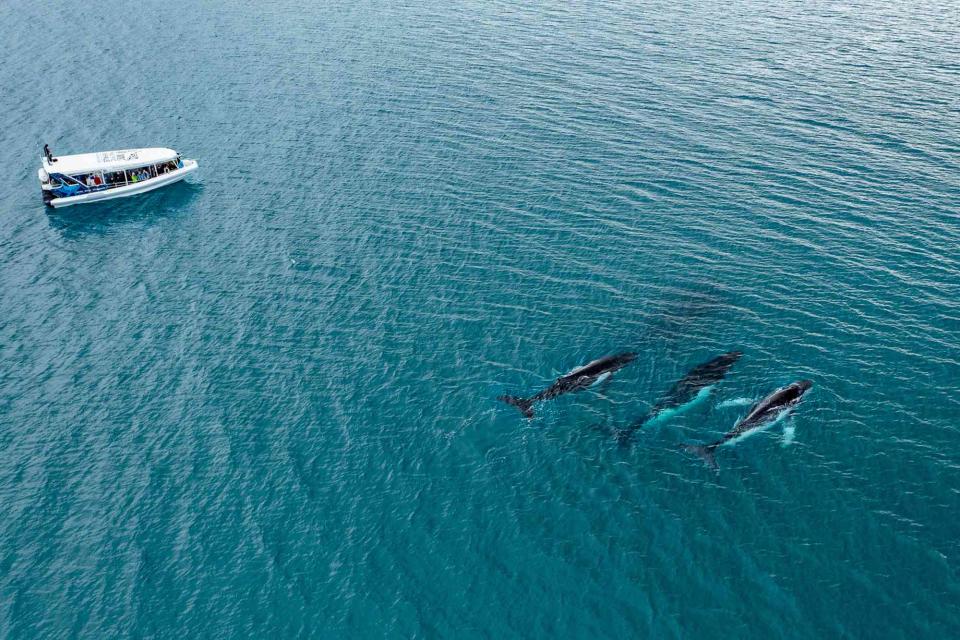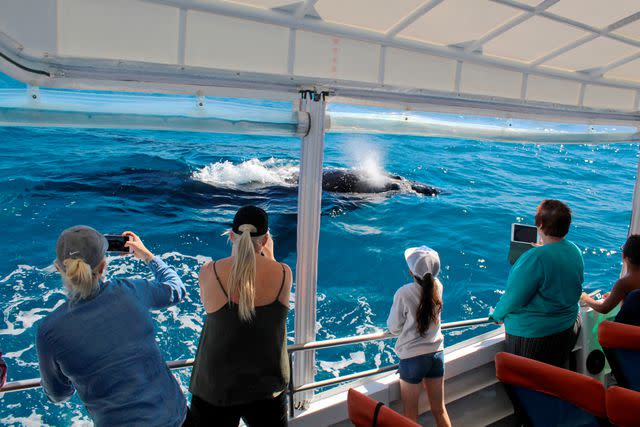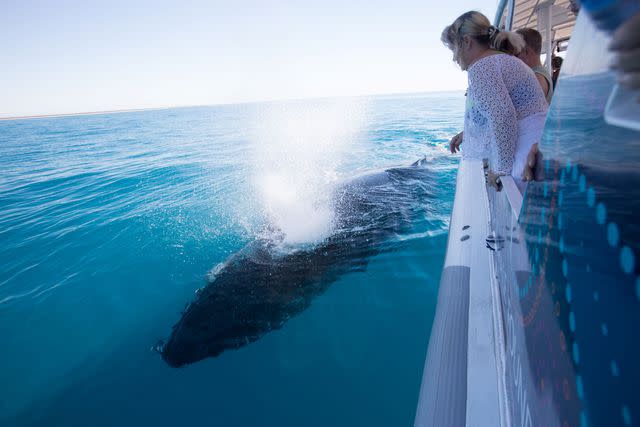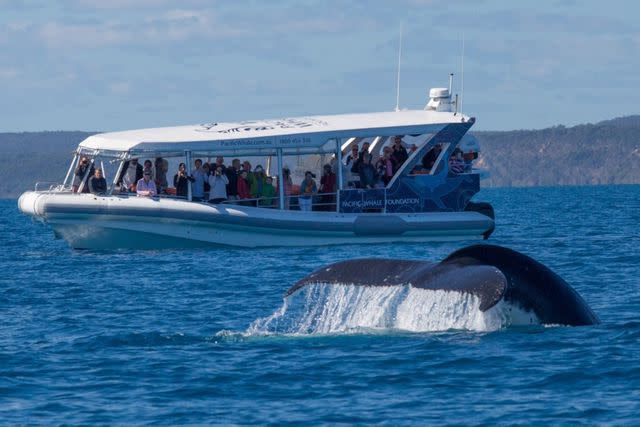You've Probably Been Whale Watching, but These New Trips Offer 'Whale Listening'
Thanks to onboard auditory technology, whale watchers from Australia to Mexico can now eavesdrop on what’s happening under the waves.

Courtesy of Pacific Whale Foundation
Humpbacks in Platypus Bay, in eastern Australia.I scanned the surface of the ocean, waiting for a breach or a blow to pierce the water. It was an hour into my whale-watching trip off the coast of Moorea, an island in French Polynesia, and still no luck. “Maybe we’re too late in the year,” I mused to my husband. The region’s whale season goes from roughly August to October; I knew November was a long shot. Our Moorea Activities Center guide, Jay Tevaireva, had one last trick up his sleeve: a hydrophone.

Courtesy of Pacific Whale Foundation
Watching a humpback surface and spout.The device picks up sounds in the ocean, whether from underwater volcanoes, earthquakes, ships, or marine creatures. Whales, such as the humpbacks we hoped to spot, often sing to communicate. “They can arrange sounds into songs,” says Dr. Barry McGovern, a research associate for the nonprofit Pacific Whale Foundation (PWF) in Australia. The tunes, which scientists believe are sung only by males, can travel some 9,000 miles and last up to 30 minutes.
Whale-watching outfitters, and some hotels located near cetacean-rich waterways, are offering hydrophone experiences to help guests hear this complex vocal communication — while maintaining a respectful distance. “It allows you to hear the sounds from quite far away, so it limits the exposure whales get to vessels,” McGovern says.

Courtesy of Pacific Whale Foundation
A humpback whale blows water as guests watch.Different species of whales migrate and breed at different times and in different regions. That means travelers can embark on whale-listening excursions throughout the year. From July to October, PWF runs trips off the Fraser Coast in Queensland, Australia, where humpbacks gather and breed before returning to Antarctica.
Related: Australia's 'Humpback Highway' Takes Whale Watchers From Coastal Towns to the Great Barrier Reef
In the Northern Hemisphere, a prime window is between January and April, when the whale population off Mexico’s Baja Peninsula balloons. (One-third of the world’s roughly 90 cetacean species reside or migrate through the Sea of Cortés during these months.)

Courtesy of Pacific Whale Foundation
Whale watching with Pacific Whale Foundation.To immerse guests in this impressive migration, the Waldorf Astoria Los Cabos Pedregal introduced a listening excursion by yacht, complete with an open bar and canapés. Meanwhile, on Canada’s Vancouver Island, whales can be heard on land. Researchers at Sheringham Point Light House study orcas and humpbacks using hydrophones placed in the Salish Sea, and visitors can eavesdrop through the engine-room speakers.
We may not have had any luck hearing whale song on my late-season excursion, but Moorea did have one more surprise in store. The following morning, sitting with my toes in the sand at the beachfront Green Lodge, I nearly spilled my coffee. I saw the signature spouts and tails of a humpback mother and her calf just offshore. They hung around for half an hour or so, before continuing their long, melodic journey back to the White Continent.
A version of this story first appeared in the April 2024 issue of Travel + Leisure under the headline "Hymn of the Sea."
For more Travel & Leisure news, make sure to sign up for our newsletter!
Read the original article on Travel & Leisure.

